Companies with multiple branches, data centers, or hybrid environments face the challenge of maintaining control and availability of their IT infrastructure without losing operational efficiency. The geographical dispersion of systems can make real-time monitoring difficult, create data silos, and slow down response times to incidents.

In the face of this challenge, Checkmk positions itself as one of the most robust solutions for centralizing the monitoring of distributed environments, allowing unified supervision from a single control point, regardless of how many physical or virtual locations are being managed.
What do we mean by distributed monitoring?
Distributed monitoring is the ability to control and monitor multiple environments or locations from a single centralized system. This is especially relevant for:
Companies with offices in different cities or countries
Hybrid infrastructures (on-premise + cloud)
Independent data centers or function-specific data centers
Multi-client environments or managed service providers (MSPs)
Instead of managing independent tools for each site, a single platform is used to consolidate all performance, availability, and system status data.
How Checkmk Solves This
Thanks to its modular and scalable architecture, Checkmk allows for the deployment of remote instances that collect data from each location or environment and synchronize it with a central server. This enables:
Consolidating alerts, metrics, and logs from multiple locations
Reducing network traffic through compression and scheduled transmission
Detecting localized incidents and contextualizing them within the global environment
Maintaining a single console for the entire IT operations team
Additionally, Checkmk’s Distributed Monitoring feature greatly simplifies management, allowing for easy scaling without losing traceability.
Advantages of Centralizing Monitoring
Implementing a distributed monitoring solution with Checkmk offers concrete benefits:
Full system visibility, regardless of physical dispersion
Faster detection of local errors that might go unnoticed in a fragmented view
Reduction of parallel tools, which complicate maintenance and team training
Better trend analysis and event correlation, with all data unified
This capability is especially useful for companies that grow through acquisitions, work in regulated industries, or need to ensure operational continuity across locations.
Common Use Cases
A logistics group with warehouses in multiple cities, needing to ensure constant connectivity and performance.
A university with multiple campuses centralizing monitoring of access to critical services.
A healthcare company with clinics across the country, requiring automated alerts and control over digital medical infrastructure.
In all these cases, Checkmk allows IT teams to act quickly, avoiding downtime and optimizing resources.
Are you ready to monitor all your locations from a single tool?
At ToBeIT, as experts in Checkmk implementation, we help you deploy a distributed monitoring architecture tailored to your business. From initial setup to the customization of dashboards or smart alerts, we work with you to ensure control, efficiency, and operational continuity.




